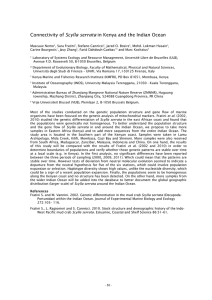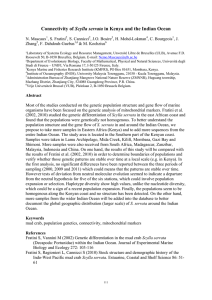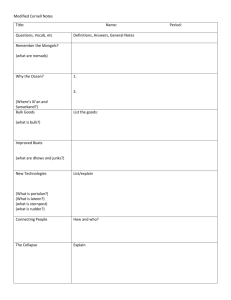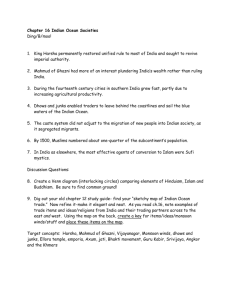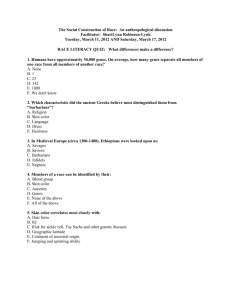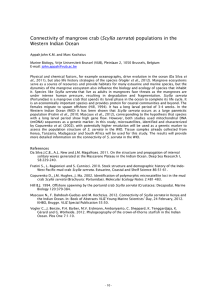SCYLLA SERRATA OCEAN
advertisement
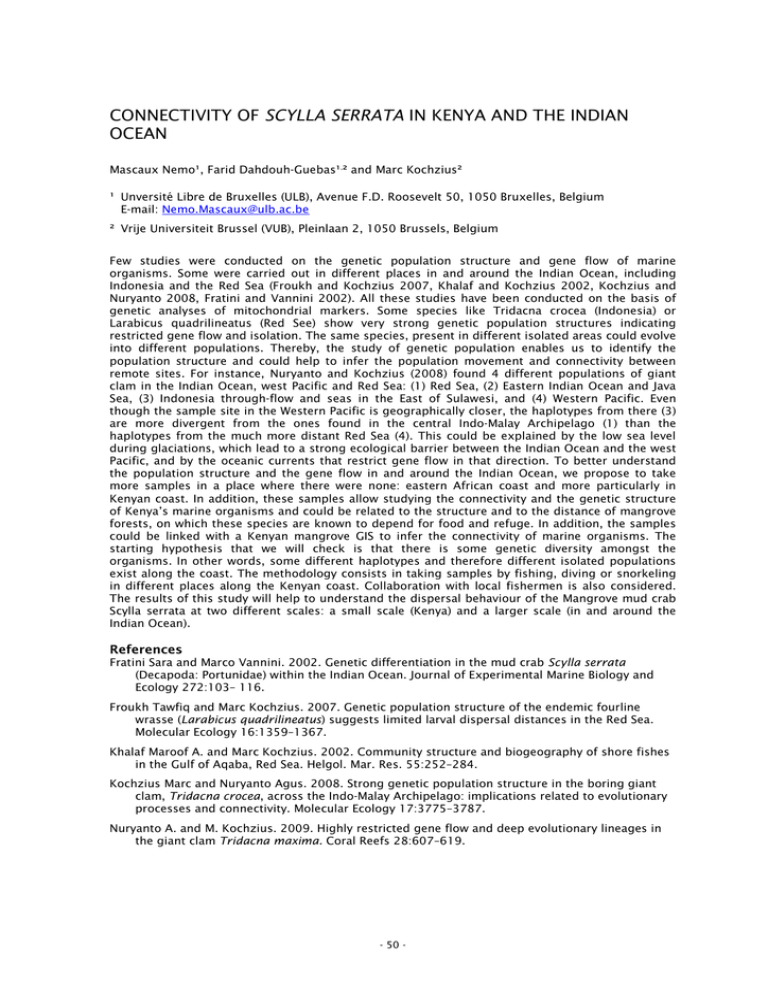
CONNECTIVITY OF SCYLLA SERRATA IN KENYA AND THE INDIAN OCEAN Mascaux Nemo¹, Farid Dahdouh-Guebas¹,² and Marc Kochzius² ¹ Unversité Libre de Bruxelles (ULB), Avenue F.D. Roosevelt 50, 1050 Bruxelles, Belgium E-mail: Nemo.Mascaux@ulb.ac.be ² Vrije Universiteit Brussel (VUB), Pleinlaan 2, 1050 Brussels, Belgium Few studies were conducted on the genetic population structure and gene flow of marine organisms. Some were carried out in different places in and around the Indian Ocean, including Indonesia and the Red Sea (Froukh and Kochzius 2007, Khalaf and Kochzius 2002, Kochzius and Nuryanto 2008, Fratini and Vannini 2002). All these studies have been conducted on the basis of genetic analyses of mitochondrial markers. Some species like Tridacna crocea (Indonesia) or Larabicus quadrilineatus (Red See) show very strong genetic population structures indicating restricted gene flow and isolation. The same species, present in different isolated areas could evolve into different populations. Thereby, the study of genetic population enables us to identify the population structure and could help to infer the population movement and connectivity between remote sites. For instance, Nuryanto and Kochzius (2008) found 4 different populations of giant clam in the Indian Ocean, west Pacific and Red Sea: (1) Red Sea, (2) Eastern Indian Ocean and Java Sea, (3) Indonesia through-flow and seas in the East of Sulawesi, and (4) Western Pacific. Even though the sample site in the Western Pacific is geographically closer, the haplotypes from there (3) are more divergent from the ones found in the central Indo-Malay Archipelago (1) than the haplotypes from the much more distant Red Sea (4). This could be explained by the low sea level during glaciations, which lead to a strong ecological barrier between the Indian Ocean and the west Pacific, and by the oceanic currents that restrict gene flow in that direction. To better understand the population structure and the gene flow in and around the Indian Ocean, we propose to take more samples in a place where there were none: eastern African coast and more particularly in Kenyan coast. In addition, these samples allow studying the connectivity and the genetic structure of Kenya’s marine organisms and could be related to the structure and to the distance of mangrove forests, on which these species are known to depend for food and refuge. In addition, the samples could be linked with a Kenyan mangrove GIS to infer the connectivity of marine organisms. The starting hypothesis that we will check is that there is some genetic diversity amongst the organisms. In other words, some different haplotypes and therefore different isolated populations exist along the coast. The methodology consists in taking samples by fishing, diving or snorkeling in different places along the Kenyan coast. Collaboration with local fishermen is also considered. The results of this study will help to understand the dispersal behaviour of the Mangrove mud crab Scylla serrata at two different scales: a small scale (Kenya) and a larger scale (in and around the Indian Ocean). References Fratini Sara and Marco Vannini. 2002. Genetic differentiation in the mud crab Scylla serrata (Decapoda: Portunidae) within the Indian Ocean. Journal of Experimental Marine Biology and Ecology 272:103– 116. Froukh Tawfiq and Marc Kochzius. 2007. Genetic population structure of the endemic fourline wrasse (Larabicus quadrilineatus) suggests limited larval dispersal distances in the Red Sea. Molecular Ecology 16:1359–1367. Khalaf Maroof A. and Marc Kochzius. 2002. Community structure and biogeography of shore fishes in the Gulf of Aqaba, Red Sea. Helgol. Mar. Res. 55:252–284. Kochzius Marc and Nuryanto Agus. 2008. Strong genetic population structure in the boring giant clam, Tridacna crocea, across the Indo-Malay Archipelago: implications related to evolutionary processes and connectivity. Molecular Ecology 17:3775–3787. Nuryanto A. and M. Kochzius. 2009. Highly restricted gene flow and deep evolutionary lineages in the giant clam Tridacna maxima. Coral Reefs 28:607–619. - 50 -
